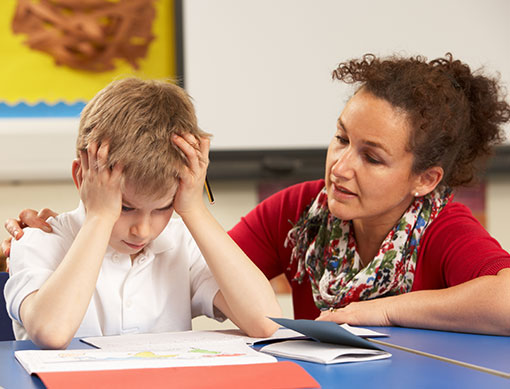In our video series, My Emotions, we talk a lot about becoming shepherds to our own flock of feelings. This is great symbolic language for children–this idea that we have all of these feelings that are roaming around inside of us, like sheep in a field.
Every now and then, one of those sheep runs astray and needs our special, focused attention. As the Shepherd calls each sheep by name–as God calls us all by name–we do the same with our feelings. This is the idea of naming it to tame it, putting a name to our feelings so we can process them and figure out how to move on.
 Oftentimes in education, especially in the current political climate, people criticize how we focus much of our time on “feelings” instead of academics. Teachers are likely to experience pushback every now and then when they focus on social-emotional learning as opposed to more measurable, “academic” skills such as math or reading. So often we overestimate children’s ability to regulate their emotions and underestimate their ability to understand our explanation and coaching through their upset.
Oftentimes in education, especially in the current political climate, people criticize how we focus much of our time on “feelings” instead of academics. Teachers are likely to experience pushback every now and then when they focus on social-emotional learning as opposed to more measurable, “academic” skills such as math or reading. So often we overestimate children’s ability to regulate their emotions and underestimate their ability to understand our explanation and coaching through their upset.
Think about how we teach reaching, or how we teach our children to learn animal names and sounds. We practice, we make it playful, and we create environments where children can explore and build understanding throughout the day. Children are naturally born feeling–emotions are equal parts sensations in the body and thoughts in our mind–but not born with the language to understand or mechanisms to process what they are going through. Why shouldn’t we teach emotional language and regulation the same way we teach reading–through practice, play, and modeling?
Here’s your challenge for this week–an upset adult is unable to calm an upset child. When you feel upset this week in the classroom, talk about it out loud and model for the children what you are feeling. I was always taught to put on my “game face” when I was teaching but realized there was power in showing some of my feelings on my sleeve.
We can normalize feeling frustrated, sad, or happy with children by talking about what we do when we feel this way. For example, the next time you feel frustrated in the classroom, say it out loud, “I am feeling frustrated. My hands are in fists, and my heart is racing. I am going to take a deep breath to calm down.” See how the children respond–and what they do the next time they feel frustrated too.
 About the Author
About the AuthorAmy S. Kronberg is an early learning consultant and adjunct professor at the University of Dayton. Mrs. Kronberg began her work in early childhood education at the University of Michigan-Dearborn Early Childhood Education Center, where she learned about the Reggio Emilia philosophy, child-centered curriculum, and playful learning environments. She moved to Dayton in 2013 to complete her Masters of Science in Education, studying early childhood leadership and advocacy so she could learn to support children and families in understanding the value of and celebrating play. She is currently all but dissertation in Educational Leadership at the University of Dayton and specializes in early learning consulting for local nonprofits, infant and toddler learning, and social-emotional development.
